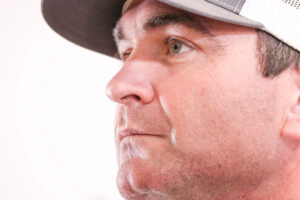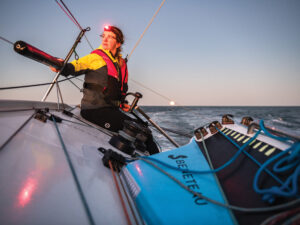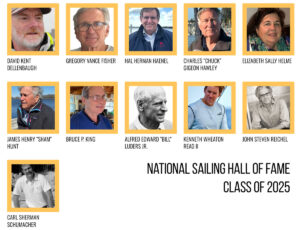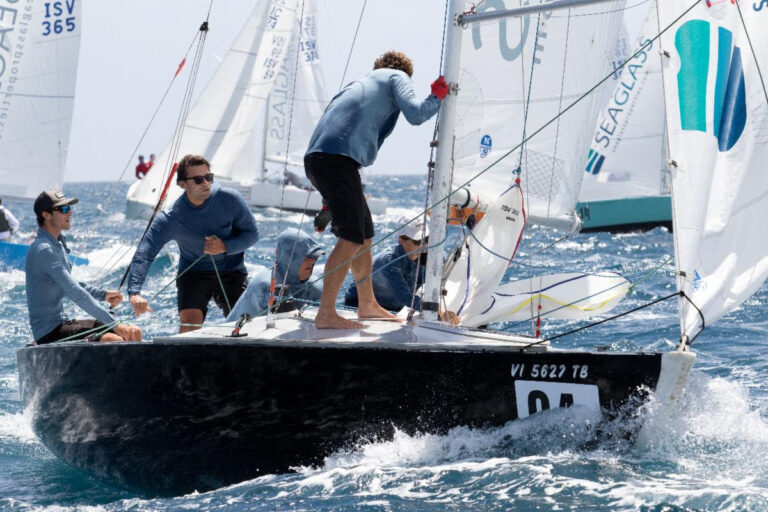The sport of sailing isn’t growing. There are bright spots, such as youth sailing and participation at race weeks, but they disguise serious underlying issues. Organizations at all levels of sailing, from our yacht clubs to our governing bodies, must look for solutions to these issues if we want to see growth. Take for example youth sailing, which is thriving. Club program rosters are full, high school sailing has exploded in participation, and the collegiate crowd has never been more competitive. But sailors still drift away in droves after graduation. The pressures of career, family, and available time take sailors off the water for many years. If it isn’t, your yacht club should be working hard to attract recent college graduates. Having a fleet of club-owned boats makes it easy to participate. Many yacht club memberships are aging and programs often become static; what’s needed is innovation, so that clubs become a center of activities for young families. A “young members” committee might help create events and attract members, and of course, the dues structure should go easy on younger people. Another problem is that our racecourses have become boring! I’m tired of perfectly set windward-leeward courses. Whatever happened to reaching (the fastest point of sailing)? Race committees could make things much more interesting by mixing windward-leeward courses with point-to-point racing using government marks. Every racecourse has a unique shoreline-let the sailors look at it while racing. The repetition gets old, and with perfectly square courses, there’s less chance for someone in the bottom third of a class to get lucky and score a good finish. Challenge sailors on all points of sail, and everyone will have more fun. A third challenge is what happens onshore during regattas. Clubs need to consider all aspects of hosting a great regatta. The first step is to set dates early and then promote participation. Recruit young people to take part as sailors and volunteers. And get the local media involved to give the event stature. Meet with journalists well in advance, and provide pictures and story ideas. During the regatta, make the event as friendly for competitors as possible. Race committees are most popular when they communicate their intentions over the radio. Post the results early at well organized parties. Take pictures or video of the racing and then display the results at night. Everyone likes seeing their boat on a big screen. Don’t forget to invite sponsors, community leaders, and the media out on the water to watch, and provide a commentator to explain the action. After it’s all over, thank everyone for participating in a post-regatta mailing, which includes the date for next year’s event. In the big picture of sailing, another problem is that assigning sailors a category as a professional or amateur based on their profession is holding sailing back. A few classes have done very well with the current system, but many people, from race organizers to boat owners, are confused by the system’s arbitrariness. Plus, creating a professional designation makes many sailors believe they should be paid. Eventually owners tire of this and leave the sport. There are many people who are considered pros because they work in the industry, but the only real professionals are those who are paid to race or win prize money. It’s time to scrap the category designations leave this issue up to individual classes or events. At least as big a problem is that, without an accepted international handicap rule, new boat construction has been flat for several years. Sure a few big boats have been built to break records, but competitive offshore racing has been foundering. A few years ago the International Sailing Federation strong-armed the Offshore Racing Council to merge. It was a nice concept, but little positive has happened. Recently, there have been meetings to create a universal grand-prix handicap system. A year has passed and nothing concrete has emerged, and the news from insiders doesn’t sound promising. We’ve used many handicap rules over the years; CCA, IOR, IMS, PHRF, and Americap. It sounds like bad scrabble. New rules being considered might be a box rule, velocity prediction program or some combination. ISAF should take a leadership role, and lock the representatives of different offshore groups in one room until a new rule emerges. Until there is a usable handicap rule, new boat construction will remain stagnant. There are problems at the top of the pyramid, too. Big-time regattas like the America’s Cup and around the world races have become incredibly expensive, and are in danger of running short of participants if costs are controlled. With a new design and additional inshore races, the Volvo Ocean Race is an example of an event that’s become more complex and pricier. In the America’s Cup, more technology may be counter-productive. In every sport, close competition and frequent lead changes builds excitement. Look at the success of NASCAR. The horsepower of the engines is intentionally limited, but the races are thrilling. People want action, not science. We’ve learned in recent years that open design class yachts often finish far apart. Boats need to be close in speed. The NFL figured out that parity would make the league stronger, and it’s worked. Sailing organizers should study the examples set by other sports. In 1987, for example, the America’s Cup trials in Australia attracted four defense teams and thirteen challengers. The boats were crewed by nationals representing their own country. It was the most exciting event I can remember. These are a few issues I see around the waterfront. Without a single, strong commissioner, participants and organizers need to work together creatively. All of us should think hard and take action where we can to help our sport succeed.









